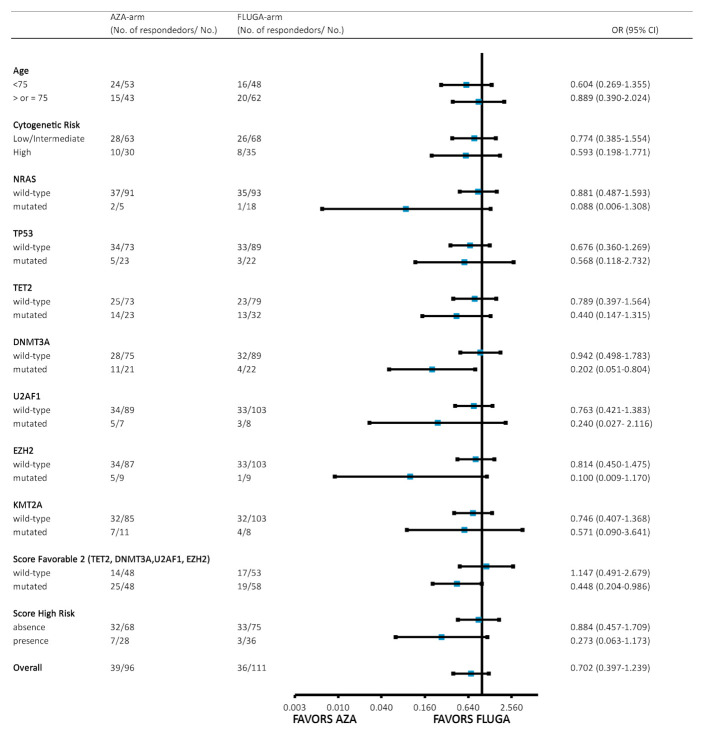Figure 1.
Subgroup analysis of responders to treatment via biological and genomic characteristics. OR: odds ratio, cytogenetic risk: low–intermediate vs. high risk as per ELN 2017 classification; high risk score was defined by the presence of mutated NRAS or TP53. A score predicting an AZA response was defined by the presence of mutated EZH2, U2AF1, DNMT3A, or TET2 genes. Patients with baseline mutations in DNMT3A (odds ratio (OR) 0.20, p = 0.023) or a score predicting AZA response (OR 0.448, p = 0.046) could benefit from azacytidine.

